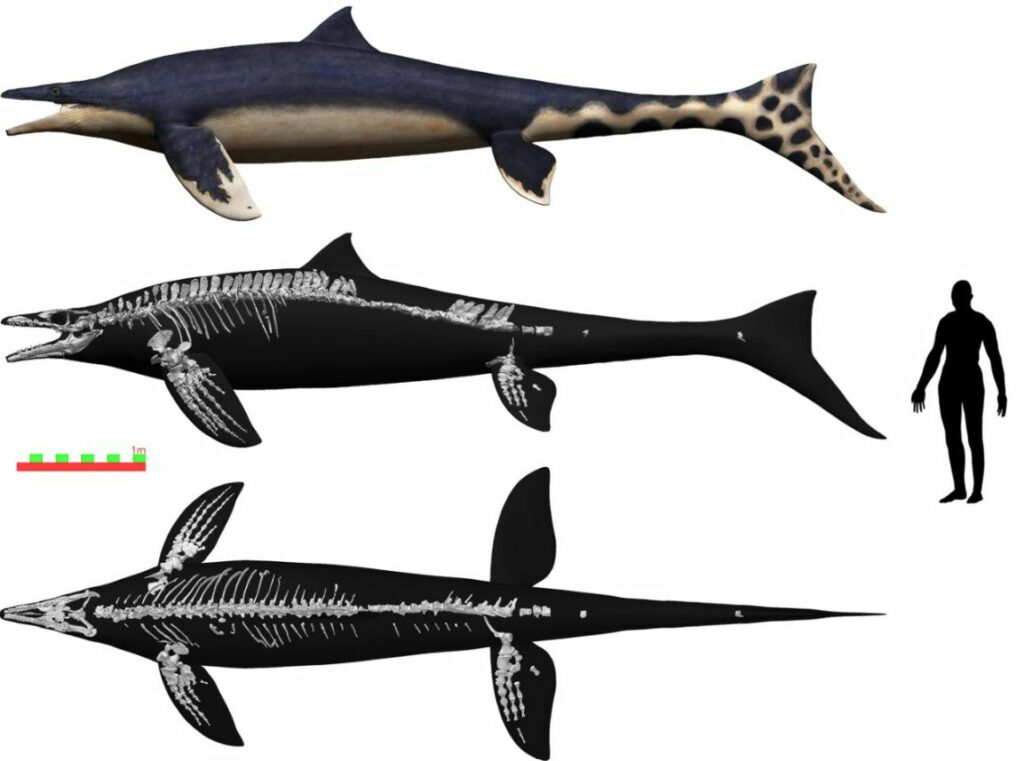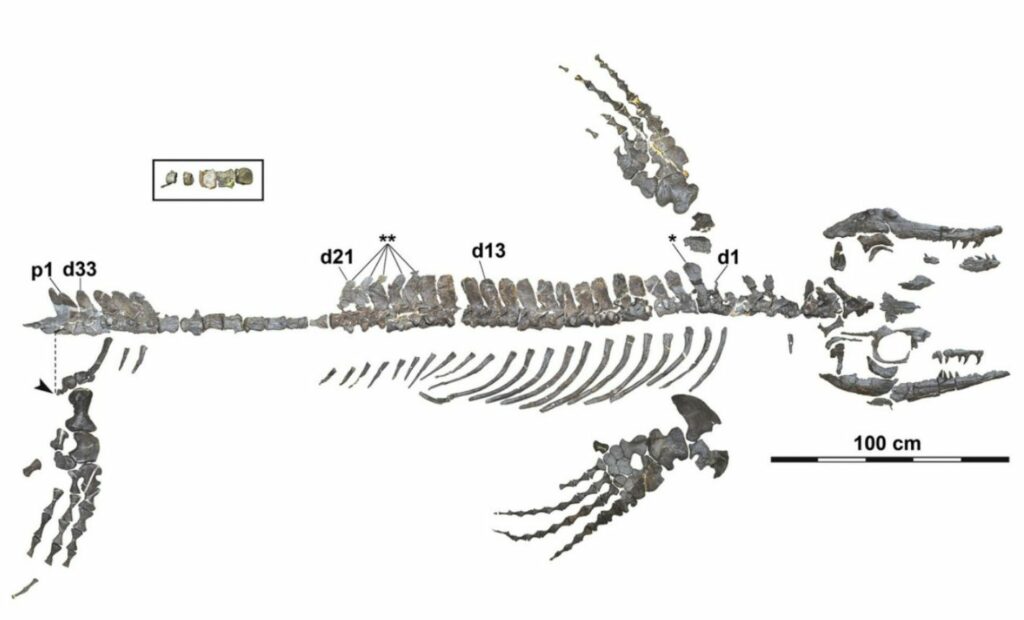Wakayama’s ‘Blue Dragon’ Mosasaur, The Fearsome Guardian of Ancient Oceans: ‘It Was Something I Had Never Seen Before’
In a groundbreaking discovery, scientists led by University of Cincinnati Associate Professor Takuya Konishi have revealed the remarkable secrets of the Wakayama Soryu, a mosasaur that once roamed the Pacific seas, terrorizing its ancient waters 72 million years ago.
This ‘Blue Dragon’ mosasaur challenges our understanding of marine life and offers a unique glimpse into the mysteries of prehistoric oceans.
The detailed findings, authored by University of Cincinnati Associate Professor Takuya Konishi and an international team, have been documented in the Journal of Systematic Palaeontology, providing a comprehensive taxonomic understanding of this prehistoric creature.
Discovery and Naming: Discovered along the Aridagawa River in Wakayama Prefecture by co-author Akihiro Misaki in 2006, the Wakayama Soryu, named for its place of origin, represents the most complete mosasaur skeleton ever found in Japan or the northwestern Pacific.
Its designation pays homage to the mythical creatures of Japanese folklore, signifying its cultural significance.
“In China, dragons make thunder and live in the sky. They became aquatic in Japanese mythology,” Konishi said.
Unique Features: The Wakayama Soryu exhibits unparalleled features, defying conventional mosasaur classification.
Notably, its rear flippers surpass the length of its front ones, a characteristic unseen in other marine reptiles.
“I thought I knew them quite well by now,” Konishi added. “Immediately it was something I had never seen before.”
This discovery prompted researchers to question the creature’s method of locomotion and its role within the prehistoric ecosystem.

Hydrodynamic Adaptations: With large paddle-shaped flippers and a distinct rudder-like tail, the Wakayama Soryu’s hydrodynamic adaptations leave scientists intrigued.
“We lack any modern analog that has this kind of body morphology — from fish to penguins to sea turtles,” he remarked. “None has four large flippers they use in conjunction with a tail fin.”
The challenge lies in understanding the coordinated use of its five hydrodynamic surfaces—raising questions about steering, propulsion, and acceleration as the creature hunted fish.
“It’s a question just how all five of these hydrodynamic surfaces were used. Which were for steering? Which for propulsion?” he added. “It opens a whole can of worms that challenges our understanding of how mosasaurs swim.”

Binocular Vision and Lethal Hunting: Equipped with nearly binocular vision, the Wakayama Soryu was a lethal hunter, providing insight into the evolutionary strategies of apex predators during the late Cretaceous period.
Its distinctive characteristics set it apart from mosasaurs found in New Zealand and California, offering a diverse mosaic of prehistoric marine life.
Dorsal Fin Revelation: Unlike other mosasaurs, the Wakayama Soryu boasts a dorsal fin, as evidenced by the orientation of neural spines along its vertebrae.
Drawing parallels to modern toothed whales, this unique feature challenges existing knowledge of mosasaur anatomy and opens new avenues for understanding their evolutionary trajectory.
Scientific Endeavor and Preparation: The painstaking preparation of the fossil, spanning five years, was made possible by grants from Japan’s Ministry of Health, Labour and Welfare and the National Sciences and Engineering Research Council of Canada.
This meticulous process involved removing the surrounding matrix of sandstone and creating a cast to preserve the skeletal orientation before excavation.
The Wakayama Soryu stands as a testament to the mysteries hidden in Earth’s ancient seas, offering a captivating journey into the evolution and adaptations of one of the ocean’s most formidable predators.
Image Credit: Illustration/Takumi
